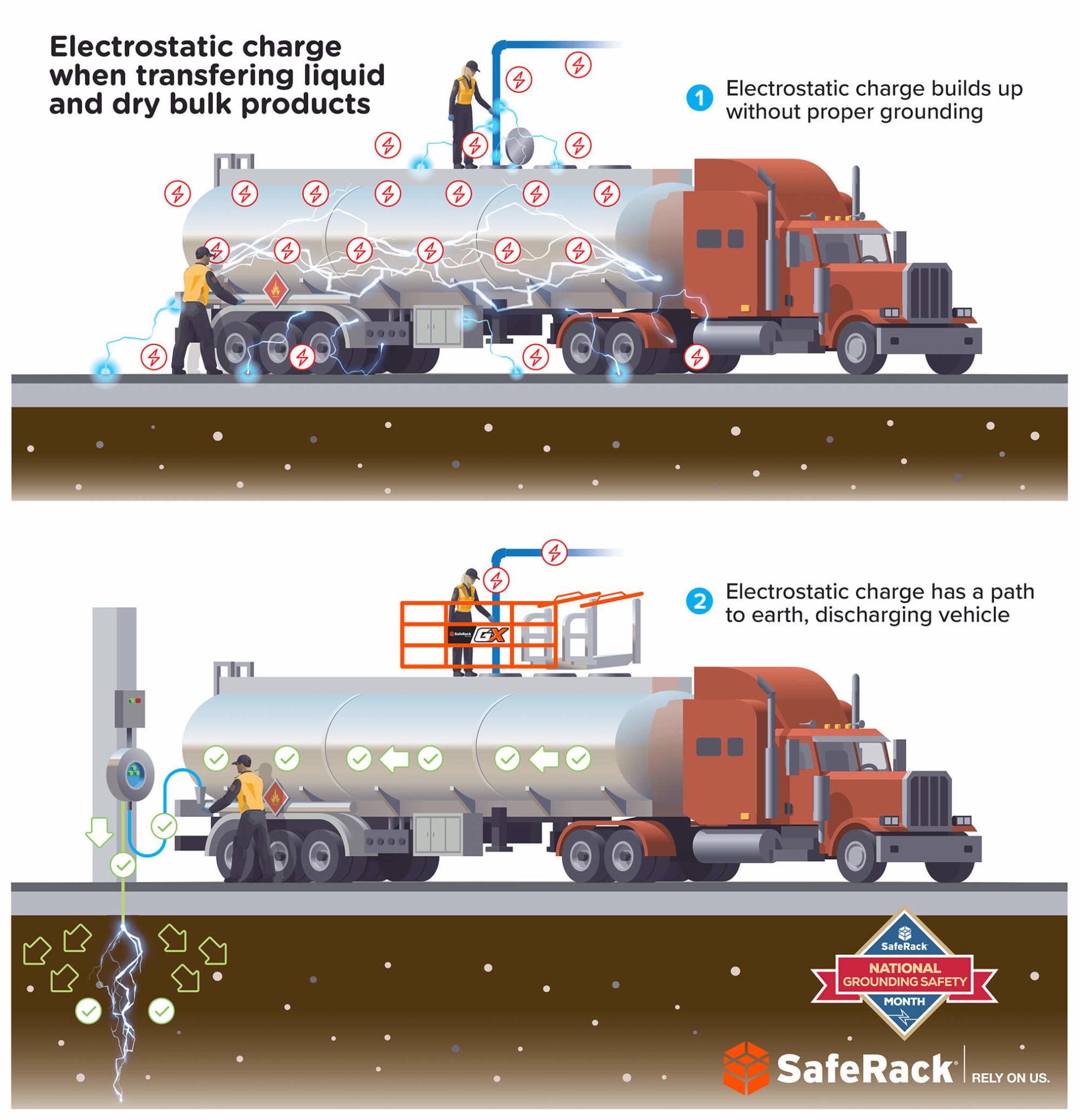Understanding the Difference in Industrial Static Control
Regarding static electricity control in hazardous locations, two terms often create confusion: grounding and bonding. While both are important parts of bulk handling safety, they serve distinct purposes, and understanding the difference can prevent costly incidents at your facility.

What Is Grounding?
Grounding (also called earthing) connects equipment directly to the earth through a conductive path. This connection allows static charges to dissipate safely into the ground as they’re generated, eliminating voltage buildup entirely.
- Provides a direct path to earth via grounding rods or electrodes
- Completely eliminates static charge accumulation
- Requires resistance of less than 10 ohms per NFPA 77 and API standards
- Must be verified and maintained by facility management
- Essential for trucks, railcars, and all conductive equipment handling flammables
What Is Bonding?
Bonding connects two or more conductive objects together to equalize their electrical potential. Rather than eliminating static charge, bonding ensures all connected equipment maintains the same voltage level, preventing sparks between bonded objects.
- Connects multiple pieces of equipment with wires or cables
- Equalizes charge between objects but doesn’t eliminate it
- Prevents sparks between connected equipment
- Required even when objects are touching (paint/coatings can insulate)
- Works best when combined with proper grounding
The Differences
| Aspect | Grounding | Bonding |
|---|---|---|
| Purpose | Eliminates static charge completely | Equalizes charge between objects |
| Connection | Equipment to earth | Equipment to equipment |
| Charge Elimination | Yes – dissipates to ground | No – only equalizes potential |
| Protection Scope | Protects against all static buildup | Prevents sparks between bonded items |
| Required Resistance | <10 ohms to earth | Low resistance between objects |
Neither grounding nor bonding alone provides complete protection. Here’s why facilities need both:
Scenario Without Proper Bonding:
A drum and receiving container at different electrical potentials can spark between them during transfer, even if the drum is grounded.
Scenario Without Proper Grounding:
Bonded equipment can still accumulate dangerous static charges together, creating spark risk to other objects or personnel.
Real-World Applications
Truck and Railcar Loading
- First: Bond the vehicle to the loading rack
- Second: Ground the entire system to earth
- Result: No voltage differences and no static accumulation
SafeRack’s Truck and Railcar Grounding products and services
Drum or ISO-Container Filling Operations
- Bond: Connect source tank to receiving drum with bonding wire
- Ground: Connect both containers to verified earth ground
- Monitor: Use visual indicators to confirm <10 ohm connections
ISO-Container Handling Solutions
FIBC and Container Handling
- Type C FIBCs require both bonding between bag components and grounding to earth
- Multiple containers must be bonded together during transfer operations
- All bonded systems need connection to proper earth ground




